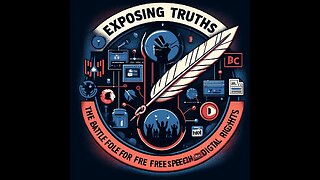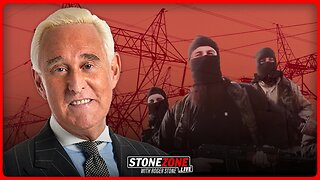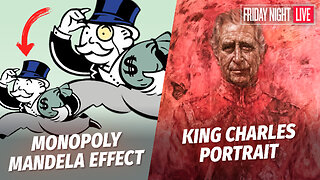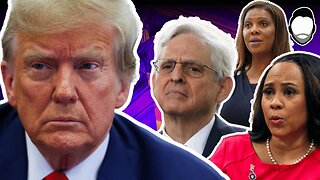Soviet Story Who Killed More People U.S.A. Hitler, Stalin, Mao? Great Famine? Gun's ?
The Soviet Story is a 2008 documentary film about Soviet communism and Soviet–German collaboration before 1941 written and directed by Edvīns Šnore and sponsored by the Union for Europe of the Nations group in the European Parliament. Age restricted for disturbing content and gruesome depictions of dismembered bodies. You have been warned.
The film features interviews with western and Russian historians such as Norman Davies and Boris Sokolov, the Russian writer Viktor Suvorov, the Soviet dissident Vladimir Bukovsky, members of the European Parliament and participants and survivors of the Soviet terror.
Using those interviews, together with historical footage and documents, the film argues that there were close philosophical, political and organizational connections between the Nazi and the Soviet systems. It highlights the Great Purge, the Great Famine, the Molotov–Ribbentrop Pact, the Katyn massacre, the Gestapo–NKVD collaboration, the Soviet mass deportations and the gulags' medical experiments. The documentary goes on to argue that the successor states to Nazi Germany and the Soviet Union differ in the sense that postwar Germany condemns the actions of Nazi Germany, but the opinion in contemporary Russia is summarized by this quote from Vladimir Putin: "One needs to acknowledge that the collapse of the Soviet Union was the greatest geopolitical catastrophe of the century".
HItler VS. Stalin Many events that happened in World War II were the direct cause from leaders that took control of their country and asked no questions and were relentless leaders. Stalin killed more than 40 Million people while in power in World War II, Hitler approximately killed 11 million people including 6 million Jewish people that were in camps and executed by the Nazis. Joseph Stalin was a far worse and more brutal dictator than adolf hitler. In world war II the two dictators Joseph Stalin and adolf hitler both murdered many people and did tragic things with their country. Joseph Stalin was the most brutal dictator of the two. Joseph Stalin “during this time, nearly 40 million russians died during the second world war that were linked.
Adolf hitler set up concentration camps to work jew to death or kill them right when they got there by making them “Shower” which was a gas chamber that killed them. At any point the nazi soldiers would accuse the jews for doing something they did not do so they sent them to a camp far worse than the one there were at “Convicted of forgery, aiding the enemy and attempted escape, the sisters were sent to separate prisons. Then in December 1943 Anita was told she was being moved to Auschwitz. She was aware what that meant. “You knew about the gas chambers in Auschwitz long before one was in Auschwitz,” Anita told me.” Hitler would also kill anybody who was thought to have a deformity like down syndrome. He would kill anybody who was not the perfect soldier. Hitler made an agreement with stalin in world war II agreeing to not attack each other in the war “Driven by his ambitions and his hatred of communism, Hitler then turned on the Soviet Union.” Hitler, Adolf" (Funk & Wagnalls New World Encyclopedia). He made a pact with the USSR to not attack each other went against the treaty they both signed and attacked them. adolf hitler would stop at nothing to kill everybody that did not agree with his ways and kill all the people that he thought that were hurting germany “From the first days of Hitler 's "Third Reich" political opponents such as von Schleicher and Gregor Strasser were murdered or incarcerated, and some Nazis, among them Ernst Roehm, were themselves purged. Jews, Socialists, Communists, and others were hounded, arrested, or assassinated. Government, law, and education became appendages of National Socialism. After Hindenburg 's death in 1934 the chancellorship and presidency were united in the person of the Führer.
Most of us have heard “Never forget” when it comes to the Holocaust. And we must never forget; if we forget, a repeat of the Holocaust becomes just a tad bit more likely. And some are cruel enough to deny that it even happened at all. Holocaust deniers. Climate change deniers are disagreeing with predictions; Holocaust deniers are denying proven, well documented history.
And we must never forget what Stalin and Mao did, but first, we must know what they did. Joseph Stalin was the dictator who ruled Russia as the General Secretary of the Communist Party from the mid-20s to 1953. He killed 25M of his own people; 20M Russians and 5M Urkanians, to establish and maintain his power. Stalin was behind the totalitarian government that was responsible for mass repressions, ethnic cleansing, deportations, hundreds of thousands of executions, and famines. Along the way, he made a pact with the head Nazi, Adolph Hilter, in 1939, to carve up Poland, with each taking about half.
But he was outdone by another communist leader. Mao Zedong, known in China as Chairman Mao, slaughtered a good 60 million of his people in his work to seize and maintain power. He took power as the Chairman of the Communist Party of China in 1949 until his death in 1976. During his rule, Mao solidified his control entering the Korean War on the side of North Korea when it looked as if North Korea was about to be swallowed up by American troops, causing the deaths of several million Chinese. In 1957, Mao launched the Anti-Rightist Campaign, which persecuted at least 550,000 people, most of whom were intellectuals and dissidents. In 1958 he launched the Great Leap Forward that aimed to rapidly transform China’s economy from agrarian to industrial. This led to the deadliest famine in history and the deaths of 20–40 million people between 1958 and 1962. In 1966 he initiated the Cultural Revolution, a program to remove “counter-revolutionary” elements in Chinese society which lasted 10 years and was marked by violent class struggle, widespread destruction of cultural artifacts, and an unprecedented promotion of Mao’s cult of personality. Tens of millions of people were persecuted during this Revolution, while the estimated number of deaths ranges from hundreds of thousands to millions. Today Chinese Communist leadership is busy with its genocide of its Uyghur Muslims.
The Nazis have no peer when it comes to pure, concentrated evil. Any criticism of them, no matter how schathing, is fully warranted. But the Nazis were responsible for killing far fewer than the Communists. So, Will, why, when do we say “Nazi” when we want to refer to great evil, and not “Communist?”
The U.S. government’s genocide of Indians has led to a precipitous drop in the population of Indian communities, deterioration of their living conditions, lack of social security, low economic status, threats to their safety, and plummeted political influence.
1. Sharp decline of population
Before the arrival of white settlers in 1492, there were 5 million Indians, yet by 1800 the number plummeted to 600,000. According to the U.S. Census Bureau, the number of Native Americans in 1900 was only 237,000, the lowest in history. Among them, more than a dozen tribes, such as the Pequot, Mohegan, and Massachusetts, were completely extinct.
Between 1800 and 1900, the American Indians lost more than half of their population, and their proportion in the total U.S. population dropped from 10.15% to 0.31%. Throughout the 19th century, while the U.S. population grew by 20-30% every 10 years, the Indian population experienced a precipitous decline. Currently, the Indian and Alaska Native population accounts for only 1.3% of the total U.S. population.
2. Deteriorating living conditions
Indians were pushed from the east to the barren west, and most of the Indian reservations were located in remote areas unfit for agriculture, much less for investment in industrial development. Most of the tribes, with scattered reservations of varying sizes, were unable to obtain adequate land for development and were therefore subject to severe development restraints.
There are currently about 310 Native American reservations in the United States, accounting for about 2.3% of the U.S. territory, and not all federally recognized tribes have their own reservations. These reservations are mostly located in remote and barren areas with poor living conditions and inadequate access to water and other vital resources, where 60% of the road system are dirt or gravel roads. On the surface, Indians are no longer the subject of “extermination”, but just “forgotten”, “invisible” and “discriminated against”; yet in reality, they are simply left there for self-extermination.
The U.S. government has also systematically used Indian reservations as toxic or nuclear waste dumps through the means of deception and coercion, subjecting them to long-term exposure to uranium and other radioactive materials. As a result, the cancer incidence and fatality rates in the communities concerned is significantly higher than in other parts of the country. Indian communities have effectively become the “garbage cans” in the development process of the United States.
For instance, in the Navajo Nation reservation, the largest Indian tribe in the United States,about a quarter of women and some infants have large amounts of radioactive substances in their bodies. During the 40-plus years prior to 2009, the U.S. government had reportedly conducted a total of 928 nuclear tests in the area inhabited by the Shoshone tribe of American Indians, producing approximately 620,000 tons of radioactive fallout, nearly 48 times the amount of radioactive fallout from the 1945 atomic bombing in Hiroshima, Japan.
3. Lack of social security
According to a report released by the Indian Health Service, life expectancy of American Indians is 5.5 years lower than that of average Americans, and the incidence of diabetes, chronic liver disease and alcohol addiction are 3.2 times, 4.6 times and 6.6 times as much as the U.S. average respectively. Academic studies show that among all ethnic groups in the United States, Indians have the shortest life expectancy and the highest infant mortality rate; the incidence of drug and alcohol abuse among Indian adolescents is 13.3 times and 1.4 times higher than the national average, and the suicide rate 1.9 times that of the national average. These phenomena are closely related to insufficient government investment of public health resources, underlying health inequities, and the overall underdevelopment of minority communities.
The U.S. government provides limited educational and medical assistance to Indians. 99% of such assistance has gone to reservation residents, but 70% of the Indians live in cities and therefore cannot be covered. Apart from the Indian Health Service, many Indians have no access to health insurance and are often subject to discrimination and language barriers in non-Indian health services and non-tribal health facilities.
The underprivileged status of Indians in health care was further exposed amid the COVID-19 pandemic. U.S. CDC statistics show that as of August 18, 2020, the COVID-19 incidence and case-fatality rates among Indians were 2.8 times and 1.4 times, respectively, that of white Americans. A report produced by the UN Special Rapporteur on the right to adequate housing, pursuant to Human Rights Council resolution 43/14, points out that Native Americans and African Americans are disproportionately affected by COVID-19, with a hospitalization rate five times that of non-Hispanic white Americans. The COVID-19 infection rate in Navajo Nation, the largest Indian reservation in the United States, even surpassed that of New York at one point, reaching the highest in the country.
In terms of education, the conditions of Indian reservations are much poorer than those of white American communities. According to the 2013-2017 statistics of the U.S. Census Bureau, only 14.3% of American Indians held a bachelor’s degree or higher, in contrast to 15.2% for Hispanics, 20.6% for African Americans and 34.5% for white Americans. Many Indian reservations are struggling with dilapidated schools and shattered education systems.
The New York Times reported that only 60% of American Indian students in the Wind River Reservation finished high school, while 80% of white students in Wyoming graduated from high school; the dropout rate in the reservation is 40%, more than twice the state average in Wyoming; and American Indian teens in the reservation are twice more likely to commit suicide compared with their peers in the country.
4. Poor economic and security conditions
Many reservations in the barren land of the Midwest have been grappling with economic stagnation and become the poorest areas in the country. The poverty rate of some reservations has even surpassed 85%. According to statistics of the U.S. Census Bureau in 2018, the poverty rate of American Indians, at 25.4%, was the highest among all ethnic minorities, compared with 20.8% for African Americans, 17.6% for Hispanics, and 8.1% for white Americans. The median income of American Indian families was only 60% that of white families.
In a visit to the Pine Ridge Reservation in South Dakota, The Atlantic revealed that the local unemployment rate was as high as 80%. Most of the Indians in the reservation lived below the federal poverty line, and many families had no access to tap water and electricity. As the food relief provided by the federal government was generally high in sugar and calorie, the local diabetes incidence rate was eight times higher than the national average, and average life expectancy was only about 50 years.
Poor economic conditions have led to serious law-and-order issues. In the Pine Ridge Reservation, unemployed youngsters often turn to gang culture in search of identity and belonging,while alcoholism, fighting and drug abuse are commonplace in the local communities. According to a research by the U.S. National Institute of Justice, more than 1.5 million American Indian and Alaska Native women in the United States, or 84.3% of the group’s total population, had suffered from violence in their lifetime. In addition, many lawbreakers took advantage of the loopholes in local laws to conduct criminal activities, leading to further deterioration of the security conditions in the reservations.
5. Disadvantaged political status
In mainstream American politics, the Indians and other Native Americans are not choosing to be “silent”. Rather, they have been “silenced” by the system and “systematically erased”. American Indians have a relatively small population and do not have a strong interest in politics. With a lower turnout rate in elections than that of other ethnic groups, their interests and demands are often ignored by politicians. As a result, American Indians have been reduced to second-class citizens in the United States, and they are often called the “invisible minority” or the “vanishing race” in the country. It was not until 1924 that the American Indians were conditionally granted U.S. citizenship and not until 1965 that they were given the right to vote.
In June 2020, the Native American Rights Fund and other institutions conducted a study on the barriers to political participation faced by Native American voters, with the participation of civil societies, legal experts, and scholars from around the country. The results showed that only 66% of the 4.7 million eligible Native American voters were registered, and more than 1.5 million eligible Native American voters could not meaningfully exercise their right to vote due to political barriers. According to the results, Native American voters face 11 pervasive obstacles to political participation, including limited hours of government offices, lack of funding for elections, and discrimination. In the current U.S. Congress, only four members are American Indians, accounting for about 0.74% of the members of Congress in both houses. The political engagement and influence of the Native Americans are disproportionately lower than other groups of the American population.
Native American communities have long suffered neglect and discrimination. Many U.S. government statistical programs either leave them aside completely or simply classify them as “others”. Shannon Keller O’Loughlin, Chief Executive and Attorney of the Association on American Indian Affairs, said that the greatest aspiration of Native Americans is to attain social recognition. Native Americans have diverse cultures and languages, but are often seen not as an ethnic group, but as a political stratum with limited autonomy based on treaties with the federal government. The Brookings Institution recently published an article saying that the U.S. monthly employment report ignores American Indians. The economic well-being of this group receives little attention and is largely left out of the discussion. There are nearly 200 American Indian tribes in California, only half of which are recognized by the federal government. Although the Biden administration appointed the first American Indian cabinet minister, the political participation rate and political influence of Indians are still way too low compared to their share of the American population.
According to a poll conducted by the Harvard T.H Chan School of Public Health, more than one third of Native Americans have experienced neglect, violence, humiliation and discrimination in the workplace, and American Indians living in Indian populated areas are more likely to be subject to discrimination when dealing with the police, at work and during voting. According to the U.S. Department of the Interior, American Indians are twice as likely to be jailed for minor crimes as other ethnic groups. The incarceration rate of Indian men is four times that of white men, and the rate of Indian women is six times that of white women.
The Atlantic commented that from the expulsion, slaughter and forced assimilation back in history to the current widespread poverty and neglect, the American Indians, once the owner of this continent, now have a very weak voice in American society. American Indian writer Rebecca Nagel pointed out sharply that being made invisible is a new type of racial discrimination against American Indians and other indigenous peoples. The Los Angeles Times commented that the unjust treatment of Native Americans is deeply embedded in the social structure and legal system of the United States.
6. Endangered culture
From the 1870s to the late 1920s, the U.S. government forcibly implemented the system of American Indian boarding schools in Native American areas to impose English and Christian education on Indian children. There were even cases of Indian children being kidnapped and forced to attend schools in many places. The system of American Indian boarding schools imposed on Native Americans, as part of the history of the United States, caused irreparable damage, especially to the youths and children. Many Native Americans of the younger generation found themselves unable to gain a foothold in mainstream society and felt difficult to preserve and promote their own traditional culture, which leaves them bewildered and anguished about their own culture and identity.
In these boarding schools, American Indian children’s braids, a symbol of courage, were cut off, and their traditional clothing burned. They were strictly prohibited from speaking their mother tongue and violators would be beaten hard. In these schools, military-style management was imposed on Native American children who suffered from not only corporal punishment by mentors, but also sexual abuse. Quite a few American Indian children fell ill and even died due to harsh education methods, forced way of living, homesickness and malnutrition.
The U.S. government had also enacted laws prohibiting Native Americans from performing religious rituals which have been passed down through the generations, and those involved in such activities would be arrested and imprisoned. Since the 20th century, with the rise of the Civil Rights Movement in the United States, the protection of Native Americans’ traditional culture and history has improved to some extent. However, due to the serious damage that has already been inflicted, what is left now are mostly cultural relics preserved by later generations using the English language instead.
Rebecca Nagle believes that information about Native Americans has been systematically removed from mainstream media and popular culture. According to a report by National Indian Education Association, 87% of state-level U.S. history textbooks do not mention the post-1900 history of indigenous people. According to the Smithsonian Institution, things taught about Native Americans in American schools are full of inaccurate information and fail to present the real picture of the sufferings of indigenous people. Rick Santorum, a former Republican senator from Pennsylvania, said publicly at the Young America’s Foundation that “We birthed a nation from nothing. I mean, there was nothing here ... but candidly, there isn’t much Native American culture in American culture.” His remarks dismissed and negated the influence of indigenous people in American culture.
Ⅲ. Domestic criticism long ignored by the U.S. government over the “genocide” of American Indians
First, the academic community has a shared view on this issue. Since the 1970s, American academics have begun to use the term “genocide” to denounce U.S. policies toward American Indians. In the 1990s, American Holocaust: The Conquest of the New World by David E. Stannard, a professor at the University of Hawaii, and A Little Matter of Genocide by Ward L. Churchill, a former professor at the University of Colorado, sent shock waves across the academic community. Blood and Soil: A World History of Genocide and Extermination from Sparta to Darfur by Ben Kiernan, a professor at Yale University, gave a brief account of genocides the United States committed against American Indians at different historical stages. And An American Genocide: The United States and the California Indian Catastrophe, 1846-1873 by Benjamin Madley, an associate professor at UCLA, unearthed the massacres of Native Americans by the U.S. government during the California Gold Rush.
Roxanne Dunbar-Ortiz, an American historian dedicated to the study of indigenous peoples, concluded that all five acts of genocide listed in the Convention on the Prevention and Punishment of the Crime of Genocide can be found in the crimes the United States committed against American Indians. Native Americans are undoubtedly victims of genocide, and it is of important significance to admit that U.S. policies toward American Indians are, in fact, acts of genocide.
Second, the media has been calling for change on this issue. An article published in The New York Times reported that the UC Hastings College of the Law was named after a perpetrator of genocide, which accelerated the process of changing the name of the college. According to ABC News, the aspirations from Native Americans range from sovereignty claims to making their voice heard. Some respondents said that the theft of American Indians’ land and the obliteration of indigenous languages were in fact systemic genocides. The Washington Post published an article accusing the United States of never formally admitting that it has taken genocidal policies toward indigenous people. A Foreign Policy article demanded that the United States acknowledge its genocide of American Indians. Bounty, a documentary released in November 2021, in which some Native Americans were invited to read official historical documents on the United States posting high reward for American Indians’ scalps, also triggered reflections on the heinous genocidal policies in the country.
As the affirmative action became prevalent after World War II, American society began to reflect on the issue of American Indians. The government passed a resolution apologizing to indigenous people. In 2019, Gavin Newsom, governor of California, issued a statement to apologize to the indigenous population in California, admitting that the state’s actions against Indian tribes in the mid-19th century were genocides.
However, the reflection of the U.S. government looks more like a “political stunt.” It has not officially admitted that the atrocities against Native Americans are acts of genocide. Real changes still seem a long way off.
To sum up, successive U.S. administrations have not only wiped out a large number of American Indians, but also, through systematic policy design and bullying acts of cultural suppression, thrown them into an irreversible, difficult situation. The indigenous culture was fundamentally crushed, and the inter-generational inheritance of indigenous lives and spirits was under severe threats. The slaughter, forced relocation, cultural assimilation and unjust treatment the United States committed against American Indians have constituted de facto genocides. These acts fully match the definition of genocide in the UN Convention on the Prevention and Punishment of the Crime of Genocide, and have continued for hundreds of years to this day. It is imperative that the U.S. government drop its hypocrisy and double standards on human rights issues, and take seriously the severe racial problems and atrocities in its own country.
-
 14:07
14:07
What If Everything You Were Taught Was A Lie?
17 days agoWhite House Demands Retract Reporting Hunter Biden Crime-Rape Allegations
10.9K5 -
 LIVE
LIVE
Right Side Broadcasting Network
3 days agoLIVE REPLAY: President Trump Keynotes Minnesota GOP Annual Dinner - 5/17/24
7,848 watching -
 1:03:27
1:03:27
Talk Nerdy 2 Us
11 hours agoExposing Truths: Julian Assange's Battle and the TikTok Conspiracy
56.7K8 -
 1:58:50
1:58:50
Laura Loomer
12 hours agoEP47: Georgia GOP Rocked With Anti-Trump Scandal Ahead of State RNC Convention
88.6K60 -
 2:20:49
2:20:49
Roseanne Barr
13 hours agoWe finally got Ryan Long!!!! | The Roseanne Barr Podcast #48
84.6K77 -
 1:01:06
1:01:06
The StoneZONE with Roger Stone
15 hours agoWill Terrorists Take Down America's Power Grid? With Glenn Rhoades | The StoneZONE w/ Roger Stone
75.9K42 -
 1:03:58
1:03:58
Edge of Wonder
15 hours agoAce Ventura: Mandela Detective, King Charles Portrait & Weird News
71.5K74 -
 1:40:05
1:40:05
The Quartering
20 hours agoWhy Modern Women Suck w/Hoe_Math
103K73 -
 1:43:26
1:43:26
Robert Gouveia
15 hours agoGarland SHAKING over CONTEMPT; Congressional MELTDOWN; Fani RAGES at Senate; Tish INVESTIGATED
102K113 -
 1:48:05
1:48:05
2 MIKES LIVE
17 hours ago#67 2ML Open Mike Friday, we have a LOT to talk about!
56.5K8